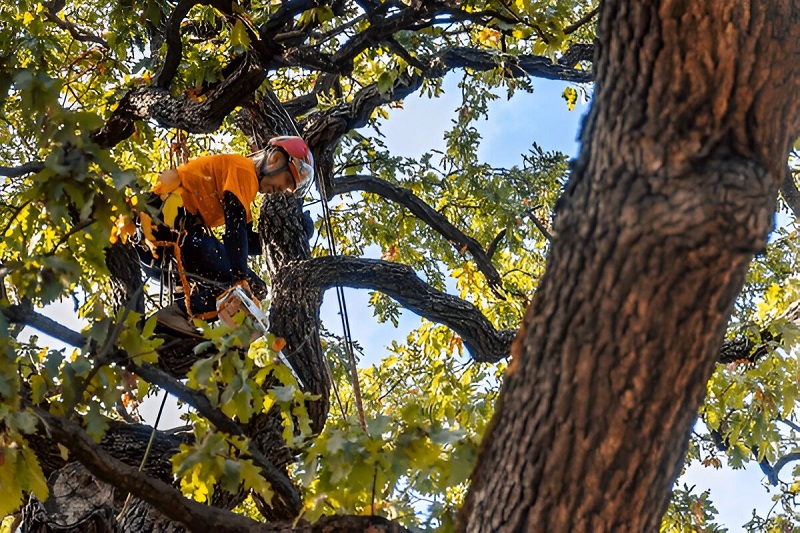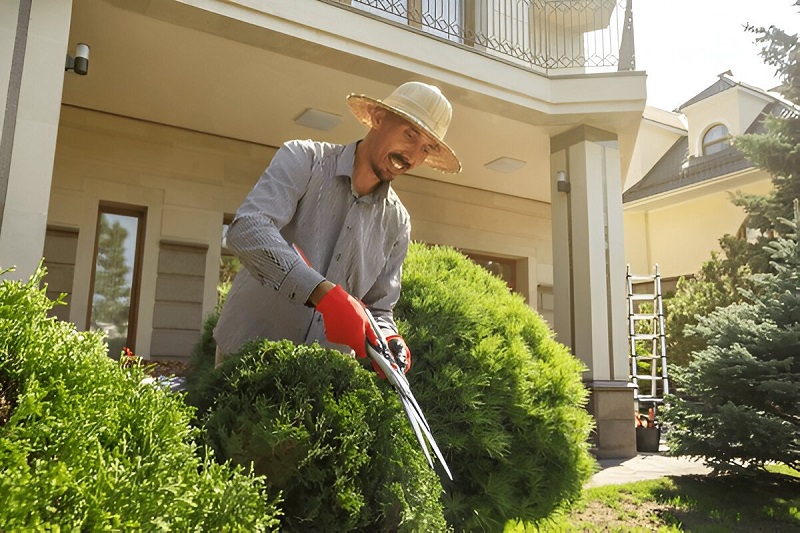
There are a multitude of questions left unanswered in life; one such question is-how does a seed become a tree? How does it manage to absorb sunlight, water, and minerals into its body as food? Certainly, answers have not been given to everyone, but we know much to tame the wild side of nature for our purposes. For example, tree pruning is hardly a must-have for each one of us, but would it not be nice if all could have that great power of making his garden purged and his landscape appealing? All this is in the effort of making a deep dive in obliterating nature as far as proving to be aesthetically practicable vis-a-vis licenses tools-and safety measures regarding tree pruning.
It is mainly the art of cutting trees, shrubs, or bushes to make them look healthy and beautiful. Mastery of certain skills is involved. This makes it a science by understanding the physiology of trees, diseases, and pests. But “why is it so important, really?” “What tools would a pro have for pruning?” “How can someone prune safely?” Well, ready yourself for a really enlightening exploration!
This blog post is completely focused on the essential criteria of pruning trees, tools of the professionals, and safety measures attached to them. This journey enriched, we invite you to join us in shattering the myth behind tree pruning-the unusually simplified Quest for Mastery.
The Silent Talker of Healthy Trees
It is for more than aesthetic claims. There are many benefits from which health and longevity to trees are determined entirely by pruning. The dead school from the tree is evicted, and the disease is cured, preventing further infestation. Pruning allows maximum exposure of the tree to light and air, stimulating its ultimate growth. Selective branch removal may provide or enhance a view, maintain a sense of privacy, or curtain the view of unwanted areas. The result is that tree pruning becomes a serious practice within the art of gardening maintenance.
However, one must keep in mind that the cut will alter growth patterns for the tree from that moment onward; therefore, before a cut is made, one must think through the entire process. The most pertinent factor is decreasing the Vigor of the cut trees, thus favouring the health and general structure of the tree so affected. Now we have realized the ‘why’, we can work on the ‘what’-that is the tools.
Tools of the Trade: The Backbone of Tree Pruning

tree pruning ringwood
Pruning a branch of a tree may seem easier to do with normal kitchen shears. Pruning, however, is not just art or science but both. It requires very special tools, crafted with specifics in mind. Pruner recommendations from those in the know include hand pruners, lopping shears, pruning saws, and pole pruners; these instruments, made specially for cuts on different lengths of branches, will give you precise cuts without bite or undue injury to the tree.
For example, anything above hand pruners would be less than ¾ inch in size. Lopping shears may take care of branches that are thicker than 0.5 inches but not more than around 2.5 inches in thickness. Pruning saws would take on the larger ones, while pole pruners would take care of the higher branches. Professionals have good care of their tools to keep them sharp and clean: this reduces the possibilities of infection to the trees.
Pruning: captures the two, the right tools, and the right skills. But tree pruning is not to be trifled with there is some serious hazard associated with it.
Safety measures on pruning: Preventing the preventable safety measure
Safety does not come with climbing, cutting heavy branches with sharp things, or even using a ladder with the job of pruning. Of course, when safety rules set out, all unnecessary injuries are avoided. Most safety gear is given to professional pruners with helmets, gloves, safety glasses, and hard shoes, which might very frequently include these as their protective equipment.
Besides, the climate and the environment are also given emphasis since most unsuitable weather conditions, namely moist, icy, or windy conditions, scream out the risk of falls at pruning.
There is also the issue about training because most amateurs usually understand when a tree is too big or high to prune safely. So really depends on the reason to seek professional help again for some emphasis on the safety aspect.
Advantages and Disadvantages of Tree Pruning
Optimally healthy pruning results in a tree gaining leaf surface, increased fruit production, enhanced strength structures, as well as improving ornamentals.
But equal parts insecurity and ignorance about appropriate pruning can lead to disaster: weakness in the tree, stunted growth, or even death. Timing is of the essence for carrying out pruning: almost always going to happen in late winter or very early spring, when the tree is still dormant, to minimize the chances of harm done.
Summary:
Pruning is one activity, which is accompanied by responsibility and wisdom. Knowledge, right tools, and safety concern; when one gets mastery in these three, anyone gets ready to master this art. Looking around in your garden at home, sensory parks, or playgrounds; many opportunities are there to practice the art.
Whether we would like to accept it or not, the trees give silent cries for our attention. Here a damaged branch, there a yellow leaf. It takes much effort to interpret that silent speak but results in a deeper connection with the world around us. For it’s really at the core of tree pruning that it’s more than a chore-it’s cause for celebration concerning comprehension, empathy, and nurture. Let us labour to these harmonious relationships, intertwining nature and human efforts into beautiful landscapes adorning Mother Earth herself.





